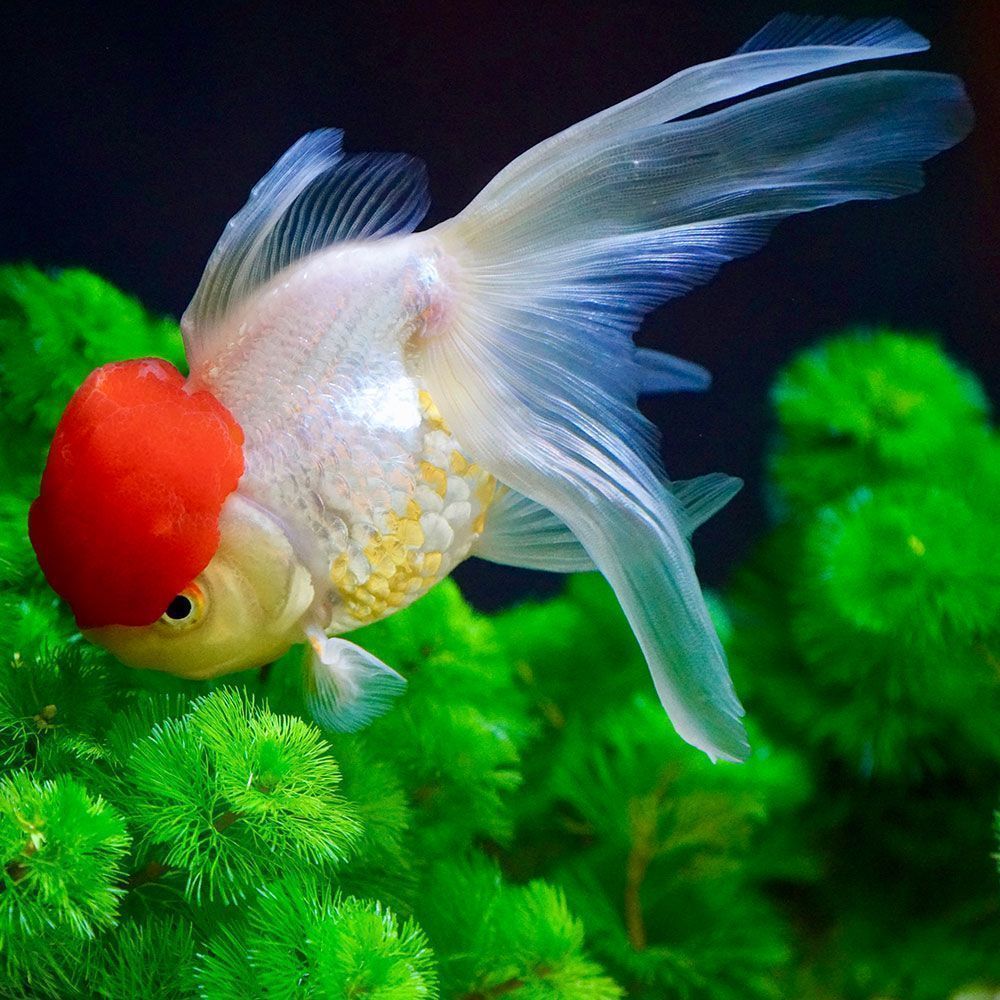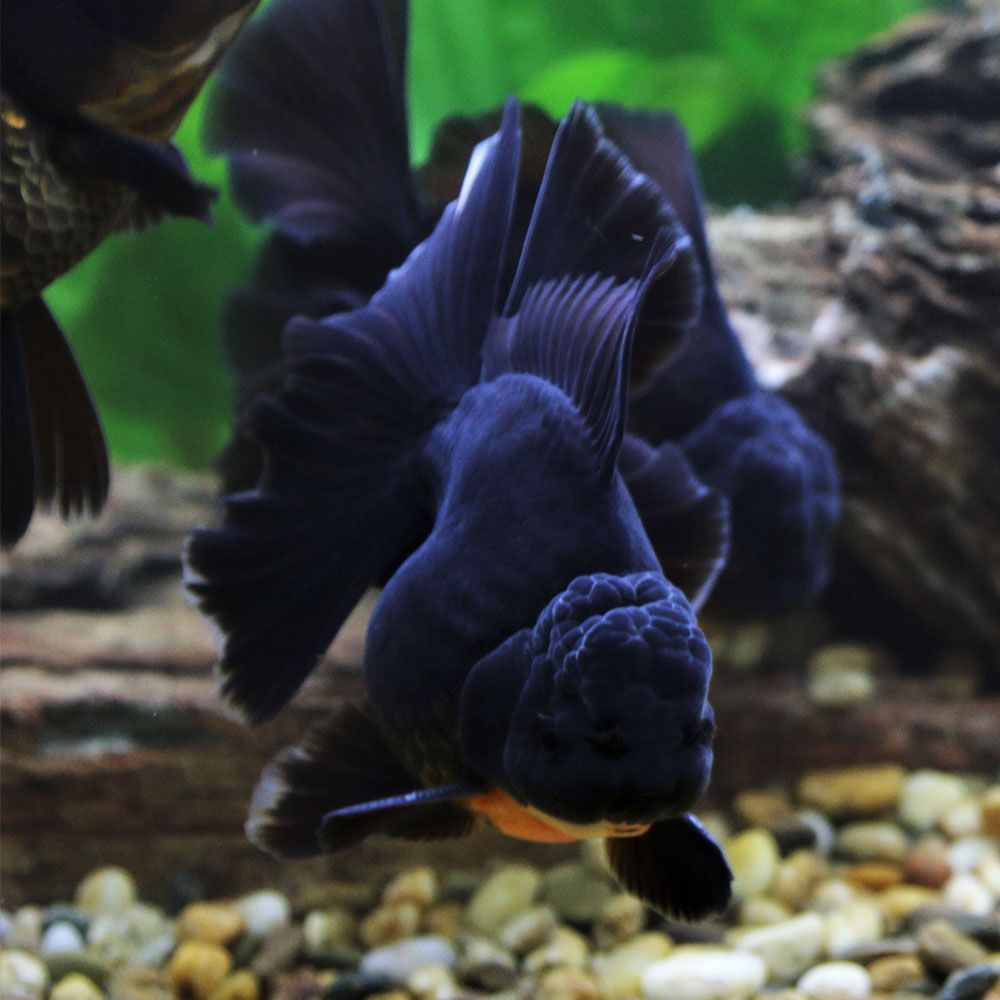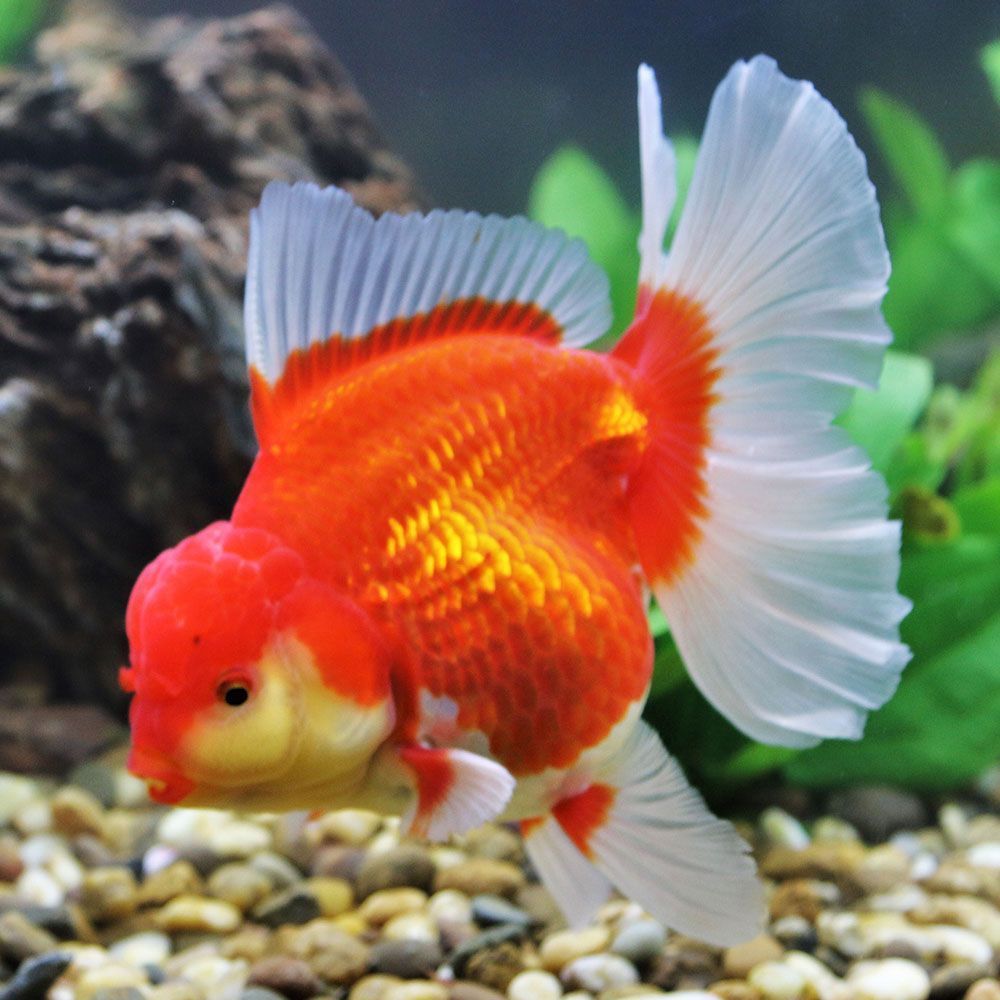If you are a seasoned aquarist looking for a fancy goldfish for your freshwater tank, consider getting the Oranda goldfish. This is an amazing addition to both species-only and community tanks.
The attractive little fin buddy looks extremely cute and comes in a wide variety of colors. It’s also quite fun to watch the fish swimming around with flowy fins.
Does that pique your interest? Let’s explore more about this beautiful species.
What is an Oranda Goldfish?
Oranda Goldfish is a unique freshwater tank goldfish that has a shimmer on its body and a cap on its head.
| Common Names | Oranda goldfish, oranda shishigashira, Dutch lionhead, Holland Lion mask, Netherlands Lion Head |
| Appearance | Shimmering orange or yellow, large, deep, symmetrical body, long quadruple tail, large belly with shimmering scales in various colors; raspberry-shaped cap or wen on head |
| Size | Usually 17.8-30 cm (7-12 in), can grow up to 38 cm (15 in) |
| Lifespan | Usually 8-15 years. Up to 20 years with the best care |
| Temperament | Peaceful, social |
| Tank Level | All levels |
| Care Level | Intermediate |
| Minimum Tank Size | 30 gallons to begin with. Add 10 gallons per extra fish. |
| Tank Mates | Own group, other peaceful community fish of similar size |
What is the History of Oranda Goldfish?
Oranda goldfish originated in Japan and China in the late 1700s and is the descendant of wild carp. It is one of the oldest fancy goldfish breeds.
It is considered a cross between Lionhead and Japanese fantail goldfish. Initially mistaken as native to the Netherlands, it was called “Holland Lionmask” or “Dutch Lionhead.”
What makes Oranda Goldfish unique?
In comparison to the common goldfish, the species has some basic differences in traits, like its swimming abilities and vision.
Oranda is a slow and somewhat clumsy swimmer due to its distinctive body shape and paired fins. Additionally, if its wen becomes too large, it can obstruct its vision, making swimming challenging.
Despite its limited swimming prowess, the oranda goldfish is still active and enjoys exploring all levels of the tank.
How does Oranda Goldfish look?

Now, if you are eager to learn more about the physical traits and behaviors of the oranda, let us delve right in!
What is the Size of Oranda Goldfish?
Orandas generally reach a length of 17.8-30 cm (7-12 in) when mature. However, size can vary based on genetics and tank conditions.
For instance, the largest reported oranda, named Bruce, bred at the TungHoi Aquarium in Hong Kong, grew to an impressive 38 cm (15 in).
What is the Color of Oranda Goldfish?
Shimmering orange or yellow is the most prevalent color among oranda goldfish.
But there are also numerous notable varieties to choose from, like red, blue, black, white, chocolate, bronze, and so on. They also have further color morphs, red and white, calico, and the recently-developed and rare blue-scaled one.

What are Features of Oranda Goldfish?
Oranda goldfish has a large, deep body and a long quadruple tail. Its belly is large and almost as wide as its length, adorned with shimmering metallic or matte scales in various colors.
It has a raspberry-shaped cap on its head called the “wen, hood, or crown,” which may cover its entire face except the mouth.
This wen starts developing when it’s about three to four months old and continues growing for up to two years, varying in size and shape.
All fins, except the dorsal fin, are paired, giving the fish a symmetrical appearance. The caudal fin, in particular, is expansive and fans out when the fish is not in motion.
What is the Behavior of Oranda Goldfish in the Tank?
Oranda goldfish is a social and peaceful community fish. It spends most of its time swimming around the tank, foraging in the gravel, or exploring plants.
It’s not a fast swimmer but is energetic. The fish enjoys the company of others of its kind and doesn’t hide often. It explores all levels of the tank, but you might occasionally see one resting in the lower areas.
What is the Lifespan of Oranda Goldfish?
Oranda goldfish typically live for 8 to 15 years on average. In my experience, with proper care and a well-maintained aquarium, some can even reach 20 years.
Oranda Goldfish Care
The care and breeding of oranda goldfish are generally similar to common goldfish. Here, we will specifically present the parameters unique to orandas. For a comprehensive guide on goldfish care and breeding, we recommend referring to the detailed resource before bringing this fish into your care.

If you are eager to add this captivating fish to your aquarium, let us explore essential care tips to ensure its well-being!
What is the Tank Size for Oranda Goldfish?
Start with a 30-gallon tank for one oranda goldfish. If you add more orandas, increase the tank size by 10 gallons per fish to accommodate their size and waste production.
Follow a 20-30% water change regime along with this to maintain a healthy environment.
What does Oranda Goldfish eat?
The oranda goldfish is an omnivore that needs a balanced diet of both plant and animal-based foods.
Feed it with these foods to provide a well-rounded diet that helps maintain their health and coloration:
- Commercial goldfish pellets
- Live or frozen foods: Brine shrimps, daphnia, tubifex worms, bloodworms
- Spirulina-based foods
- Blanched or boiled vegetables: Peas, zucchini, spinach, lettuce, cucumber
- Algae-based food
- Freeze-dried foods
Young orandas may require two meals daily, while adults can be fed once daily.
Be cautious! Overfeeding can lead to digestive issues and obesity. Feed it in small portions (around 3% of its size), ensuring it consumes all the food within a few minutes. Remove any leftovers to maintain water quality.
What are the Tank Mates for Oranda Goldfish?
Oranda goldfish thrives in a community of its kind or other fancy goldfish. It also does well with similar-sized passive fish. Some suitable tank mates for them are:
- Ryukin goldfish
- Fantail goldfish
- Other orandas
- Black moor goldfish
- Pearlscale goldfish
- Pepper corydoras
- Sailfin pleco
- Catfish
Which Tank Mates to Avoid for Oranda Goldfish?
Avoid housing the following together:
- Aggressive fish (eg: barbs and cichlids): They can stress and harm these gentle, slow-moving goldfish with their confrontational behavior.
- Fin-nipping fish (eg: neon tetras and small barbs): They may bite the long, flowing fins of this goldfish, causing injuries and distress.
- Smaller fish (eg: white cloud minnows and mosquito fish): Orandas may consider smaller species as prey, potentially consuming them.
- Smaller snails: Orandas tend to view snails as a tasty snack, which can result in the depletion of snail populations within the tank.
- Fish that may outcompete for food (e.g.: Ranchu goldfish): Orandas are slow swimmers and reach the food slower. They may also be slower eaters due to their head growth (wen). So avoid this type to prevent your goldfish from starving.
What are the Common Diseases in Oranda Goldfish?
Besides being susceptible to the diseases that common goldfish suffer from, you may come across your oranda goldfish suffering from the following disorder.
| Disease Name | Causes | Symptoms | Treatment |
|---|---|---|---|
| Overgrown wen (head cap) | Unknown. | Wen growth sagging down and obstructing vision and hampering eating, potential wen injuries from rough objects, limited or no eyesight if the wen covers the eyes, vulnerability to bacterial infections. | Monitor regularly to prevent excessive wen growth, maintain a safe tank environment to avoid injuries Surgical removal of excess wen in severe cases. |
Quick Tip: Keep oranda goldfish of similar wen growth and poor vision together. This will prevent starvation caused by competition from more abled-sighted specimens.
A word from FishInAquarium
The peaceful oranda goldfish in your tank will certainly leave you tongue-tied with its vibrant colors and intriguing behavior.
While the species is quite demanding due to their sensitivity to water fluctuations, with proper attention and a stable tank environment, you can establish a thriving and fascinating aquatic habitat. With that, we hope you are now considering the possibility of adding oranda goldfish to your aquarium.
If you found this article valuable, we encourage you to share it with fellow fish enthusiasts. Should you encounter any challenges or have questions, please feel free to contact us via email, and we’ll get back to you.


